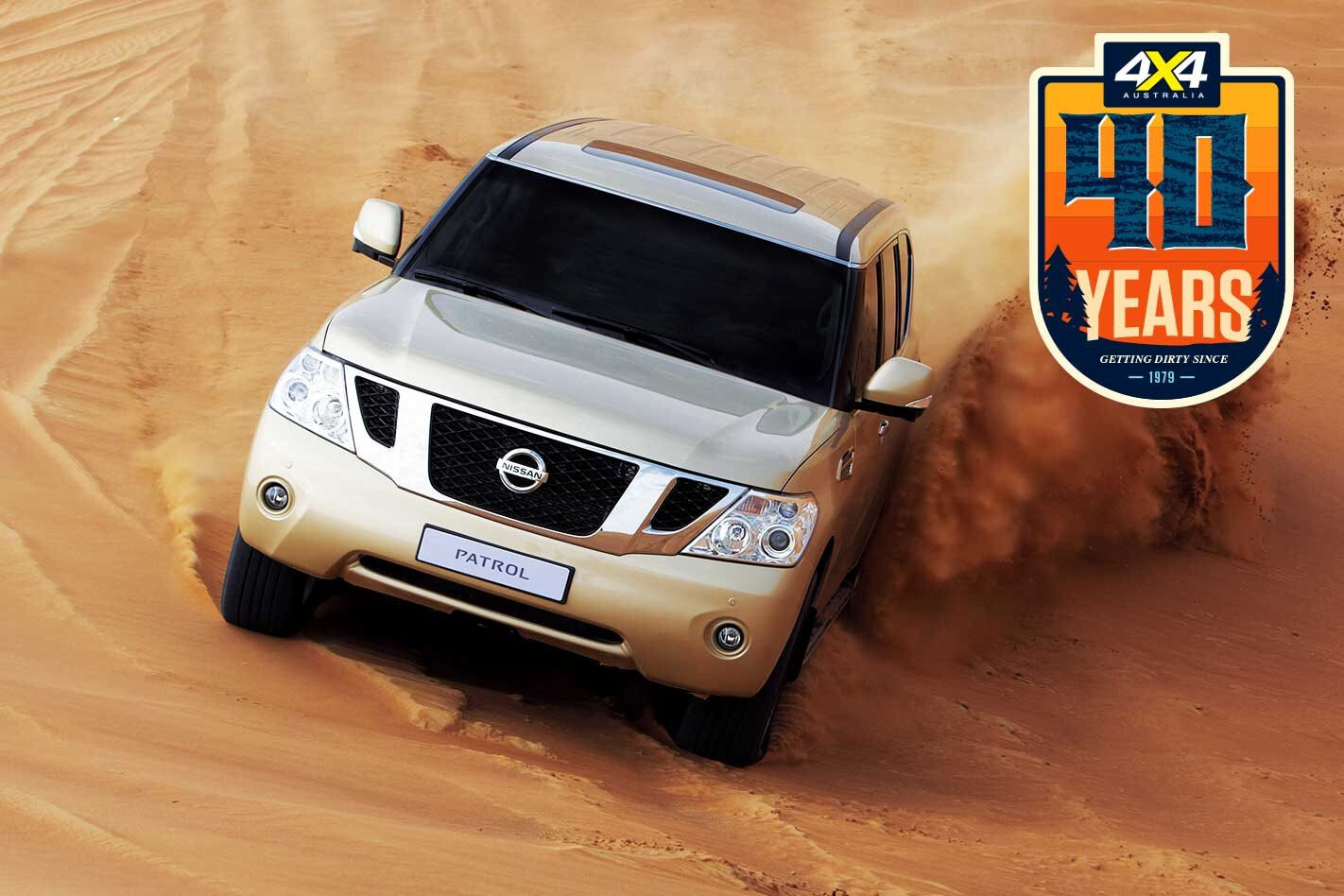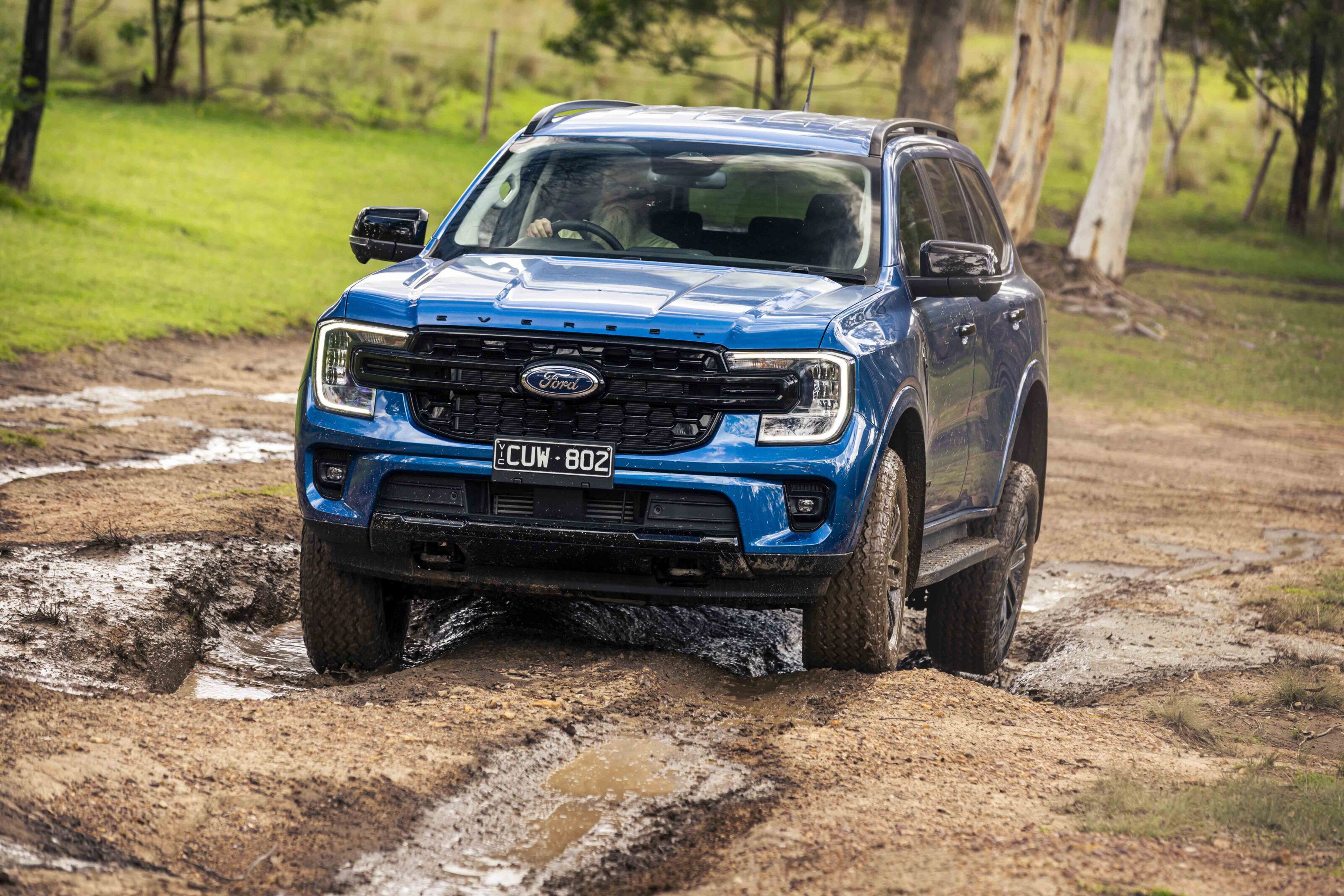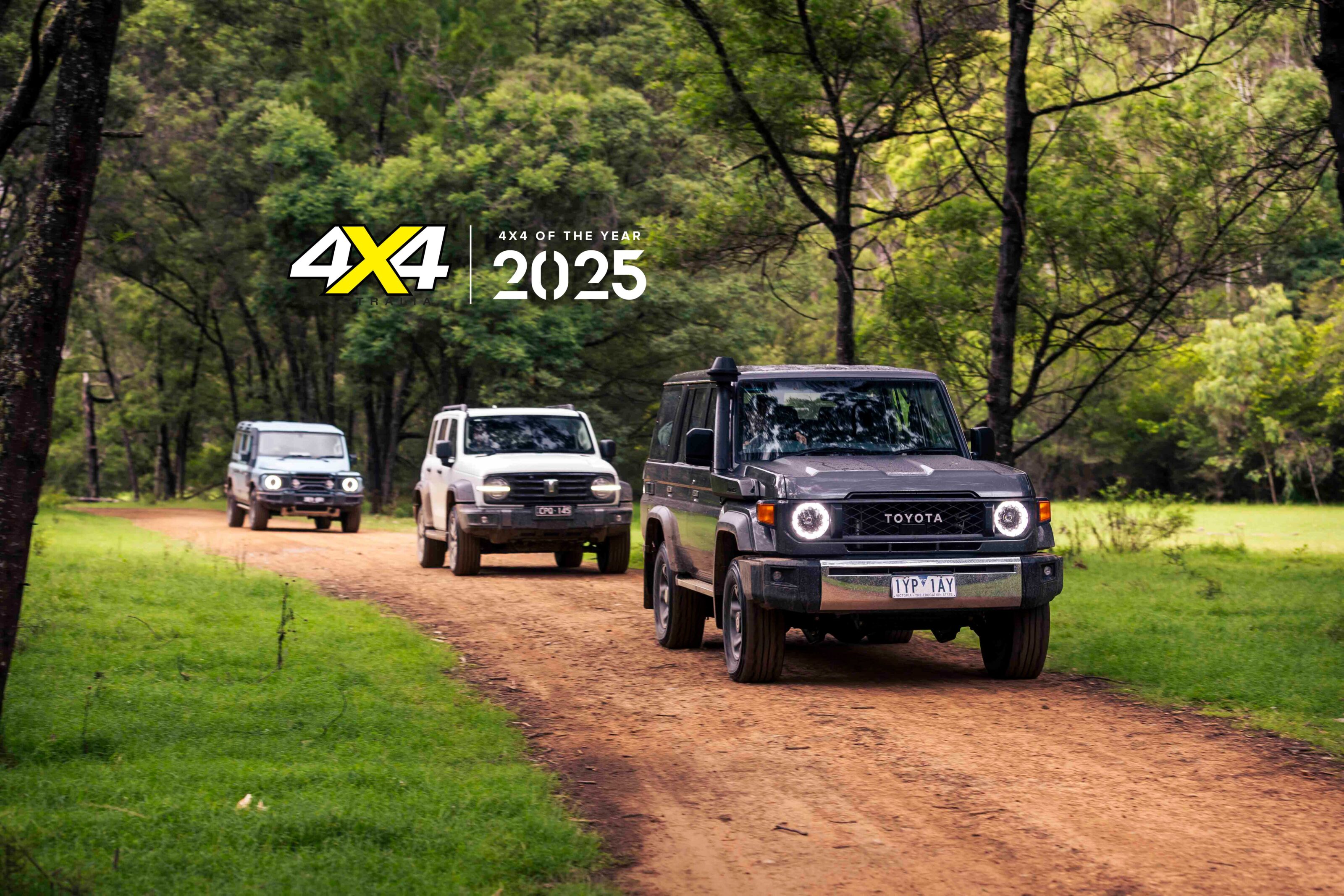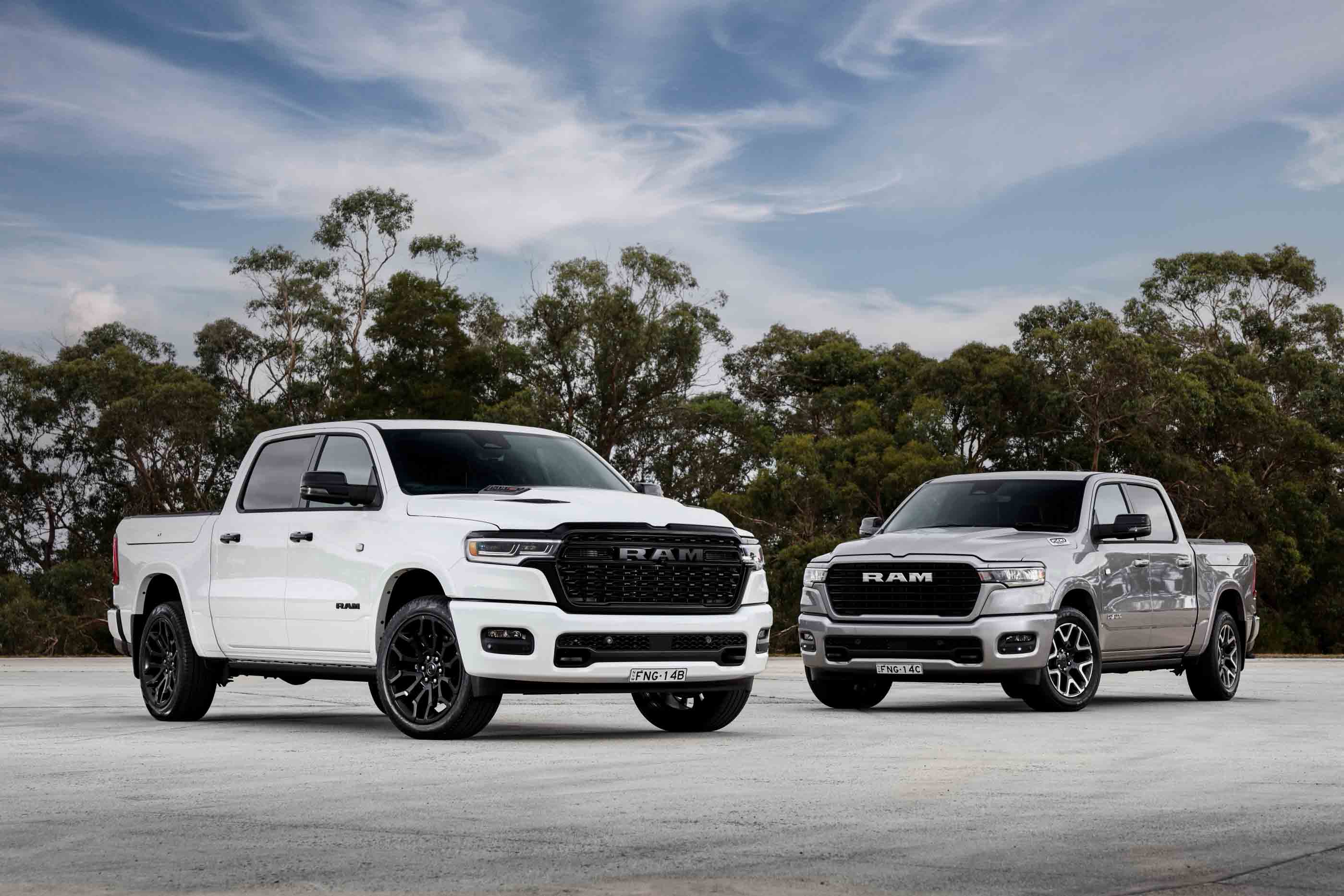Back in 2010, we were lured to the Middle East and the deserts of the Arabian Peninsula to experience a new-vehicle launch like no other. The vehicle in question was the Nissan Y62 Patrol and its first appearance causing commentators to describe it as a ‘big’ Land Cruiser 200 Series clone. The 5.6-litre V8 petrol engine-powered Patrol was certainly bigger than its rival, and only existed because of demand in the Middle East.
They love the Nissan Patrol in the Middle East. No, I mean they really love the Patrol. The launch of a new generation of Nissan’s iconic off-roader would be big news here, too, of course. In a barbie and a beer with a few mates sort of way, preferably somewhere off the beaten track.
But not in the Middle East. Nissan president and CEO Carlos Ghosn invited 1000 of his closest mates (read: dealers, customers, local royalty, gentry and a few journos) to the first official viewing of the seventh-generation Patrol, followed by a slap-up dinner at Abu Dhabi’s seven-star Emirates Palace hotel.
And it wasn’t just a case of Carlos pulling the rug off the thing and posing for happy snaps. No, Nissan actually commissioned a mini operetta with the theme ‘the hero comes home’. According to the blurb it told the story of a hero born in the desert who also conquers the city. Geddit?
Anyway, we got 20 dancers leaping and flag waving for 10 minutes on stage before the hero came home. And bloody hell, he’d been doing some bulking up while he’d been away!
The size and sheer opulence of the Empire Palace hotel is enough to take your breath away, but let’s just say the new, seventh-generation Patrol (or Y62 as it is coded) fitted right in. First impression when it rolled onto stage was it’s a Land Cruiser clone. Second impression? It’s a big Land Cruiser clone!
When Ghosn posed with the Patrol that impression of mass was only reinforced. Not the most vertically endowed of blokes, he was dwarfed next to the 20-inch wheels, themselves perfectly in proportion with the slab-sided bodywork.
Get up closer and the Y62’s still huge, but you can see some of the detail work that’s gone into the design. The reverse hook to the D-pillar, the chromed vent cut into the guard, the complex headlight array, the retention of the signature Nissan angled strut grille. Inside, the display cars were opulent in leather, wood and chrome. Space was, ahem, abundant.
Check the figures and you can see the new Patrol’s mass confirmed in print. Compared to the current GU, the new wagon stretches 90mm in overall length to 5140mm, 105mm in wheelbase to 3075mm, is 55mm wider and nearly 270kg heavier at a whopping 2780kg – admittedly this is in top-spec form. Inside, Nissan is claiming second-row passengers get 100mm more legroom than in Land Cruiser, while third-row seats now fold into the floor helping boost luggage capacity.

Run the ruler over the Cruiser and the Patrol dwarfs it. Some 190mm longer overall and 225mm in wheelbase, it is also 25mm wider and 35mm taller. And weight? Well, so far, Nissan has only confirmed a 5.6-litre V8 petrol engine for Patrol, so using the top-spec petrol Land Cruiser Sahara as a benchmark, Y62 is a substantial 170kg heavier.
Think about that for a second. In an era of greenhouse gas, electric cars and downsizing, Nissan has made the 200 Series look Mini Me.
So what’s going on? The Middle East that’s what. Without this market the Patrol wouldn’t even exist. Unlike Australia, where the heavyweights have declined in popularity, big SUVs remain incredibly popular. And so is luxury. Every intersection in Abu Dhabi is a 4×4 show.
There are X5s, MLs, Q7s and plenty of Yank tanks as well as Cruisers. It’s this top end of town the Patrol has been missing out on. Petrol prices? Heck, at 50c per litre, litres per 100km clearly aren’t the highest priority. It’s still all about kilometres per hour.
“The last Patrol? People said ‘it’s a great car, but you are off the mark in terms of comfort and luxury, it is too frugal, too austere’,” Ghosn explained. “So we listened, we corrected it, we have presented it and now you have seen it.”
Well, you could hardly miss it…

There’s another aspect to all this and that will become apparent at the New York Auto Show in April when Nissan’s Infiniti luxury brand reveals its new QX56. Yep, it’s a badge-engineered Patrol. Previously, it was a badge-engineered Armada, the built-in-America for America full-size SUV based on the Titan.
Well now, Patrol and QX are twinned and the Armada’s future is unknown. One possibility is Patrol will also form the basis of a new Armada, but that depends on where the struggling SUV segment and entire US market heads.
Through all these permutations and perambulations the end result is we get the luxurious, sophisticated Patrol the Middle East and the USA wants. And to rub it in, we also wait another year for it because right-hand drive production doesn’t even start at Nissan’s new Kyushu (Japan) plant until 2011.
So if you like Patrol because it is a simple, tough truck then prepare for a shock. While Toyota has eased Land Cruiser lovers slowly upmarket through the 80, 100 and 200 Series, there’s been no such subtlety at Nissan. Apart from both of them being body-on-frame five door wagons with eight seats there’s little that links GU to Y62.
Part-time 4WD system? Gone. Rigid axles? Gone. Manual transmission? Maybe. For now there are only seven- and five-speed autos. Yep, seven-speed.
Diesel engine? Watch this space.

The new Patrol is now suspended independently all-round on double wishbones, supplemented at the top of the range by the West Australian Kinetic hydraulic stabiliser system also employed by Toyota’s Land Cruiser. And it uses the latest version of Nissan’s electronically controlled permanent All-Mode 4×4 system.
Drill right down to the new Patrol’s basis and you’ll find even the frame bears no relationship to the GU’s aged underpinnings. Instead, it employs an overhauled version of the F-Alpha structure used by Armada, the current QX, Titan and the mid-size Pathfinder and Navara utes that are already sold in Australia.
“We redesigned every aspect of the frame, suspension and also the powertrain,” confirmed Nissan’s Hiroyuki Fushiki. “So in that sense we can say it is an all-new platform.”
Fushiki-san has a long title that effectively boils down to ‘bloke in charge of Patrol development’. He also did the GU and you might argue he didn’t bend the back too hard on that considering how – let’s say – evolutionary it was compared to the GQ. A classic case of if it ain’t broke don’t fix it.
But 12 years on, it’s obvious this generation wasn’t about fixing, but completely replacing. And there’s no doubt Fushiki-san has earned every Yen in his pay cheque.
The US$500 million project kicked off in 2004, well before any formal approval was given. The green light actually came in 2006, but by then engineers had already tuned and tested 200 prototypes at Nissan’s Motegi, Oppama and Tochigi proving grounds.
The engineering crew then headed for the Middle East because it was unable to replicate that region’s unique challenges at home. On-road that means being able to run hard at 160km/h and beyond in temperatures heading for 50°C. Off-road, there’s dry heat, powdery sand and the Mid-East enthusiasm for banzai dune-driving.
In the end, Nissan says more than 40 engineers completed 13,265 hours (precisely) of testing in the region.
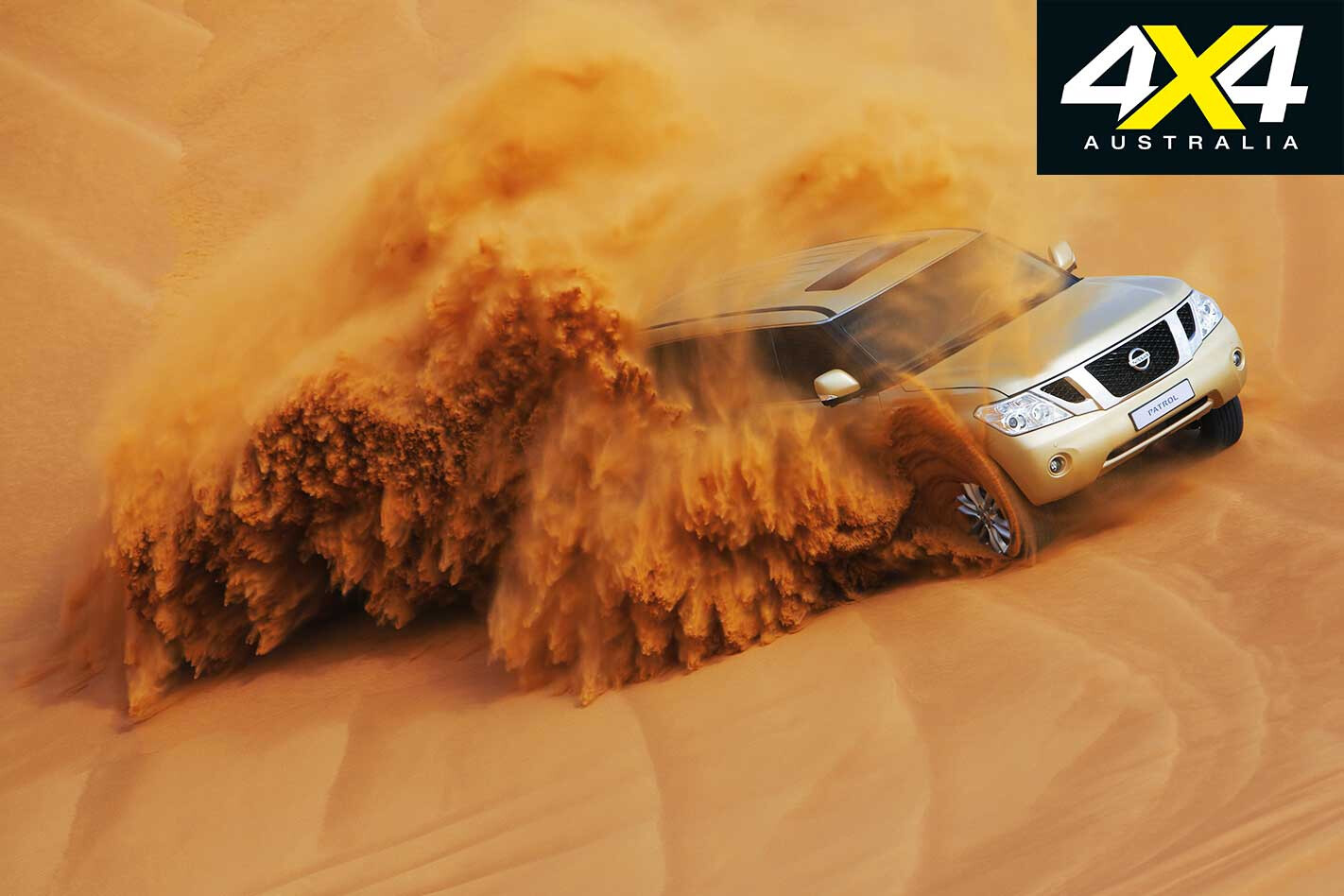
At least one prototype also came Down Under. We know that because an eagle-eyed punter spotted the Armada-bodied mule in the car park at Nissan Australia. One happy snap later and a Melbourne newspaper was reporting the Armada was on the way to Australia. Oh well…
The big Australian involvement in Y62 came via Nissan’s licensing of the West-Aussie developed Kinetic Ltd’s hydraulic stabilisers. Nissan’s shift to independent suspension was prompted by the desire to deliver better on-road ride, handling and body control. But there are obvious articulation and ground clearance issues that then arise off-road.
The Patrol’s Hydraulic Body Motion Control (HBMC) is the solution, says Fushiki. A further development of the 200 Series’ KDSS (Kinetic Dynamic Suspension System), it locates hydraulic cylinders over each wheel. Connected by cross-piping and two accumulators they generate variable roll stiffness depending on the driving conditions.
The system does this by transferring oil between the upper and lower sections of each cylinder, according to road conditions. The big advance from the Toyota system is that HBMC dispenses with stabiliser bars all together, rather than only temporarily disabling them.
“Stabiliser bars keep the roll angle contained on highway and pathways, but had limitations and problems in the off-road,” explained Fushiki-san.
But it’s not cheap and that’s why lower-spec versions of the Patrol will stick with mechanical stabilisers and presumably sacrifice some on- and off-road capability. They also get 18-inch wheels and rubber.

The All-Mode 4×4 system is Nissan’s own work, of course, and the Y62 system’s fundamentals are derived from the current Pathfinder. However, it has been upgraded so the driver can select the mode he wants, dependant on driving conditions, via a dial and push buttons on the console, be it Auto, 4×4 High, Low, sand, on-road, snow or rocks. Think of the Discovery’s Terrain Response system and you’re on the right track.
The guts of the All-Mode system is a lockable, helical, limited-slip rear diff, lockable centre diff and open front diff, supplemented by stability and traction control, hill start assist and hill descent control. The system runs 100 per cent rear-drive static, shifting up to 50 per cent of torque forward under hard acceleration.
And hard acceleration can be expected via the up-rated VK56VD 5.6-litre V8. Based on the engine fitted to the Armada and current QX, it has been pumped up to 300kW and 560Nm primarily thanks to the fitment of Nissan’s VVEL variable valve timing system and direct injection. The old engine, with 236kW and 520Nm, will continue on as a more economical option, retaining its five-speed auto.
Speaking of which, Nissan claims an average consumption rate of around 18L/100km for the hi-po version of the 5.6, working through its seven-speed slusher. A development of the unit that debuted with the 370Z sports car, it’s been retuned to cope with the extra torque of the V8 and for better economy. Good news is the fuel tank has grown to 140 litres from the GU’s choice of 95 or 125 litres, delivering a theoretical range beyond 700km.
Compare all that with the current Patrol’s 4.8-litre inline six that produces 180kW, 400Nm and averages 16.4L/100km…
And what of diesel? Well it’s coming, but with no Middle East or US sales plans nothing’s being officially said yet. The favourite is alliance partner Renault’s 3.0-litre dCi V6, with vital figures around 195kW and 550Nm.
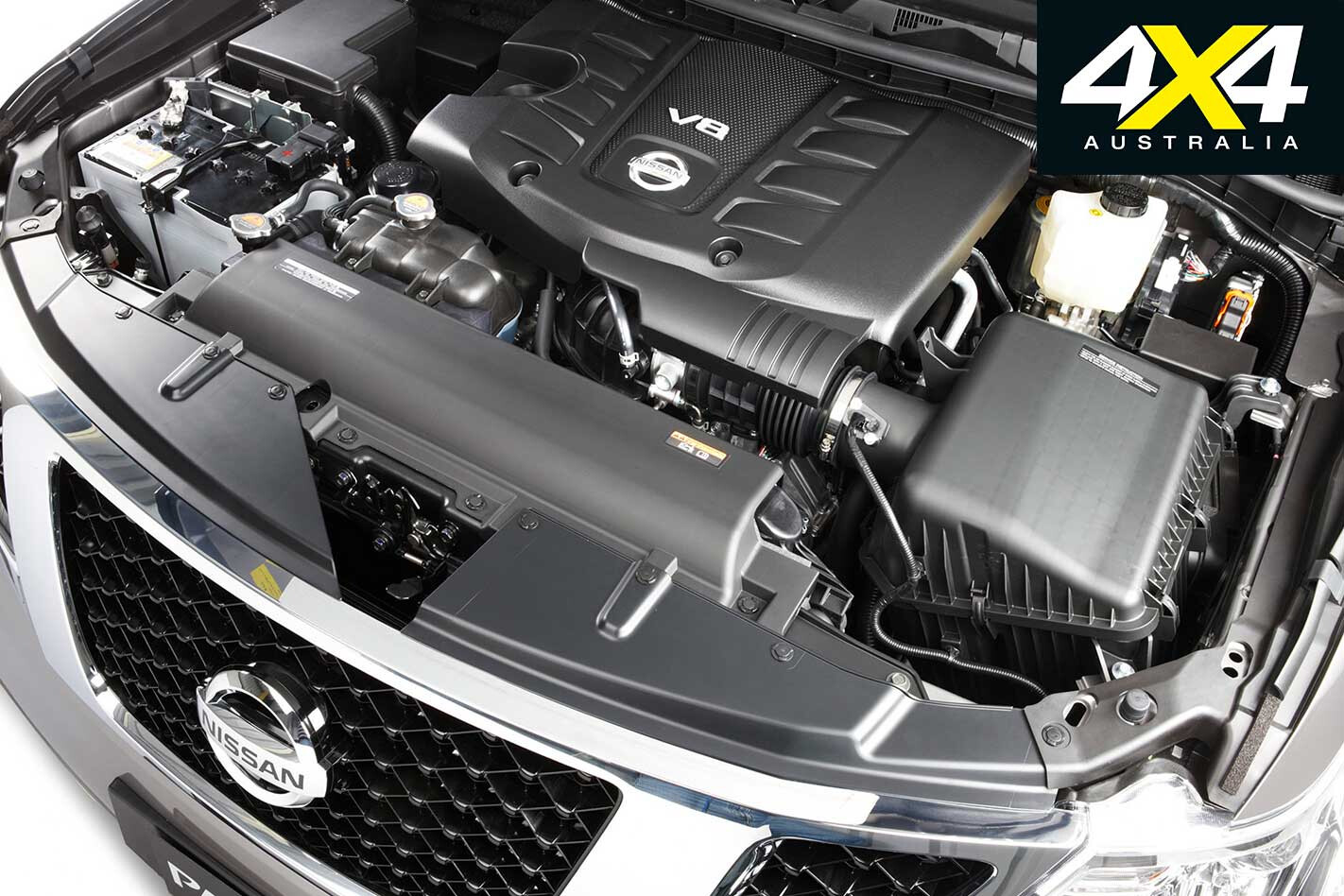
It’s going into Pathfinder and Navara this year so the chances of its spreading to Patrol must be good. Through all this change, one thing stays the same and that is braked towing capacity. Fushiki says it stays at 3500kg. Good news for the substantial number of Patrol owners who haul big loads.
But that won’t be that much solace to the hardcore Patrol traditionalists horrified by this seismic change. Some pretty hefty price rises will also surely come given the technology stuffed into it.
That’s why the GU will continue to soldier on alongside the new vehicle. At the global launch Nissan execs confirmed Australia would see both, but back in Melbourne at local HQ they were not prepared to make such a commitment, citing such issues as future emissions standards.
We’ll wait and see then, but if the GU does stop, it’s going to leave a sizeable hole in the medium and lower end of the heavy 4×4 market for Nissan as there is no plan for a stripper version of the new Patrol.
After all, such activities would be uncouth. As we learned in Abu Dhabi, Patrol’s heading upmarket.
2010 NISSAN Y62 PATROL SPECS: Engine: 5600cc V8 DOHC Max power: 300kW at 5800rpm Max torque: 560Nm at 4000rpm Transmission: 7-speed auto Suspension (f & r): Independent, double wishbone, coil springs, HBMC system Kerb weight: 2785kg L/W/h: 5140/1995/1940mm Wheelbase: 2947mm Tyres: 275/60R20 Fuel tank capacity: 140 litres
Nissan Y62 Patrol drive review
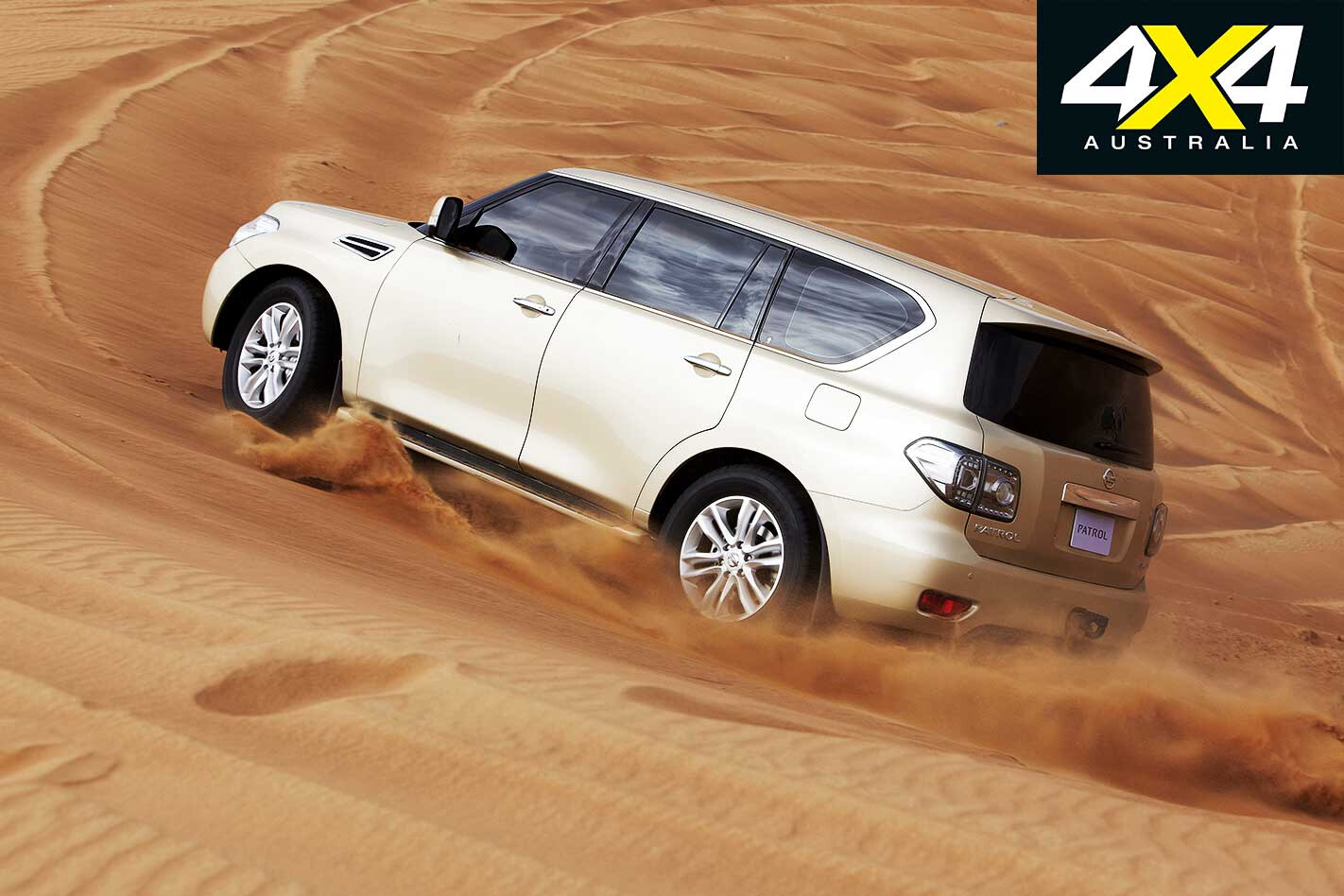
“That’s 180km/h,” remarked my new mate, Hassan, the TV reporter from Abu Dhabi. Surprised, I lifted my head from note taking in the passenger seat of the Patrol. I’d thought we were doing 120km/h. Tops.
Hassan was giving the Patrol the berries on a brand-new freeway somewhere on the Omani coast south of the capital Muscat. It was amazingly quiet, despite the heavy throttle and the amount of wind this massive vehicle was pushing aside.
And yet, a few minutes earlier and a few kays inland we’d been negotiating a dry water bed that doubles as the local road network. The nests of baby-head rocks and creek crossings are so rough and tumble the local school buses are 120 Series Toyota Prados and GU Patrols. Seriously.
A few minutes after the freeway run we clambered up a 2000m mountain, in places so steep and tight that you could hear and feel the inside rear wheel scrabbling for traction on concrete-surfaced hairpins. Cresting the treeless, rock-strewn plateau we found a row of tents, Arab dancers, a four-course lunch and even a plumbed toilet. Nissan global boss Carlos Ghosn was there, too. He ascended in a Patrol, but chose to descend in a helicopter.
The Patrol is a far quieter, albeit slower method of getting down the mountain. We were often engaging low gear or Hill Descent Control on steeper slopes. Then it was back on the freeway for another high-speed strop.
It was a weird but oh-so invigorating day, one that helps explain why Nissan has developed the new Patrol to be a seemingly contradictory combination of luxury exec express and hardcore 4×4.
And Oman is certainly a good place to test it out. One minute you’re blazing across gibber plains that could be out the back of Broken Hill, the next winding round the side of a jagged mountain on a Jeep track that is Arkaroola writ large.
The Patrol’s new full-time AWD system and independent suspension is up for it all, with the rider that the off-road conditions we tackled were tough and rough but not unconquerably extreme.
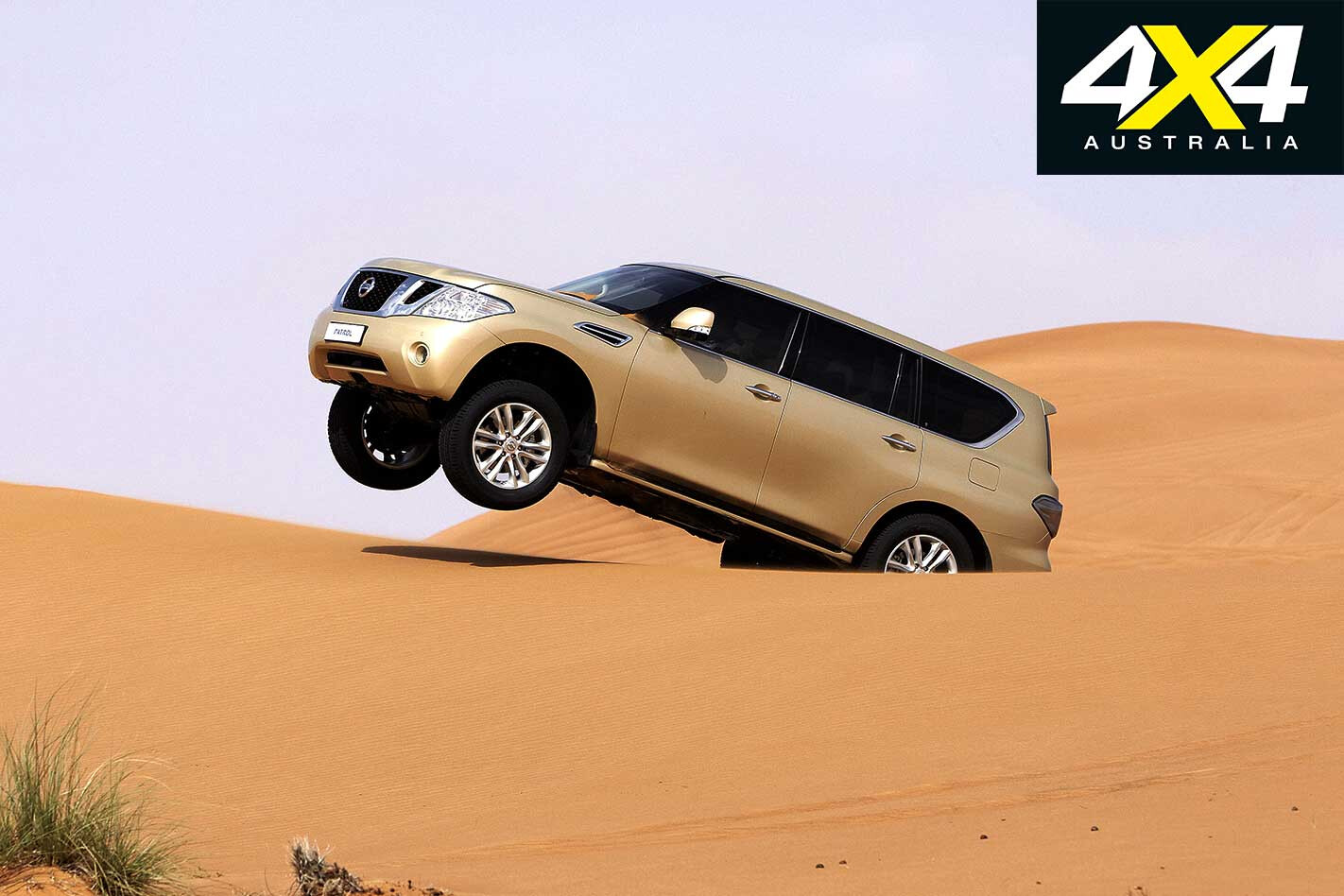
So the verdict on whether it’s as good or better – as Nissan insists it is – off-road than the GU will wait until it gets to Australia next year. But it’s fair to say it is still – at the least – thoroughly competent.
On-road, it’s a league ahead in both performance and refinement. The new 5.6-litre V8 engine is a massive performer, capable of carting this 2.78-tonne behemoth up to extreme speed with surreptitious intensity. It’s just a pity that few of us would be able to afford to run it. All day the fuel use average never dropped below 20L/100km.
The Patrol’s other star-turn, the Hydraulic Body Motion Control system, works exceptionally well on-road, delivering ride comfort and decent body control on virtually every surface at almost any speed.
Of course, the Patrol is so big and heavy, its bulk is impossible to completely disguise, something signalled by the seven-speed auto’s hyperactive desire to drop gears under loads, the pitch of the big nose forward under brakes and the steering’s disconnection from the front wheels in turns.
Inside, there’s an incredible amount of space in the first two rows, although, surprisingly, row three remains kids-only. Storage is abundant, seats are plush, visibility is excellent and the quality of the leather, wood and chrome in our top-spec test car outstanding.
It’s sitting in the Patrol that the full effect of the changes wrought to Nissan’s heavy-duty workhorse become obvious. Be it standing still, clambering up a rocky gully or cruising at 180km/h, this is a very credible piece of design and engineering.
Nissan Y62 Patrol equipment
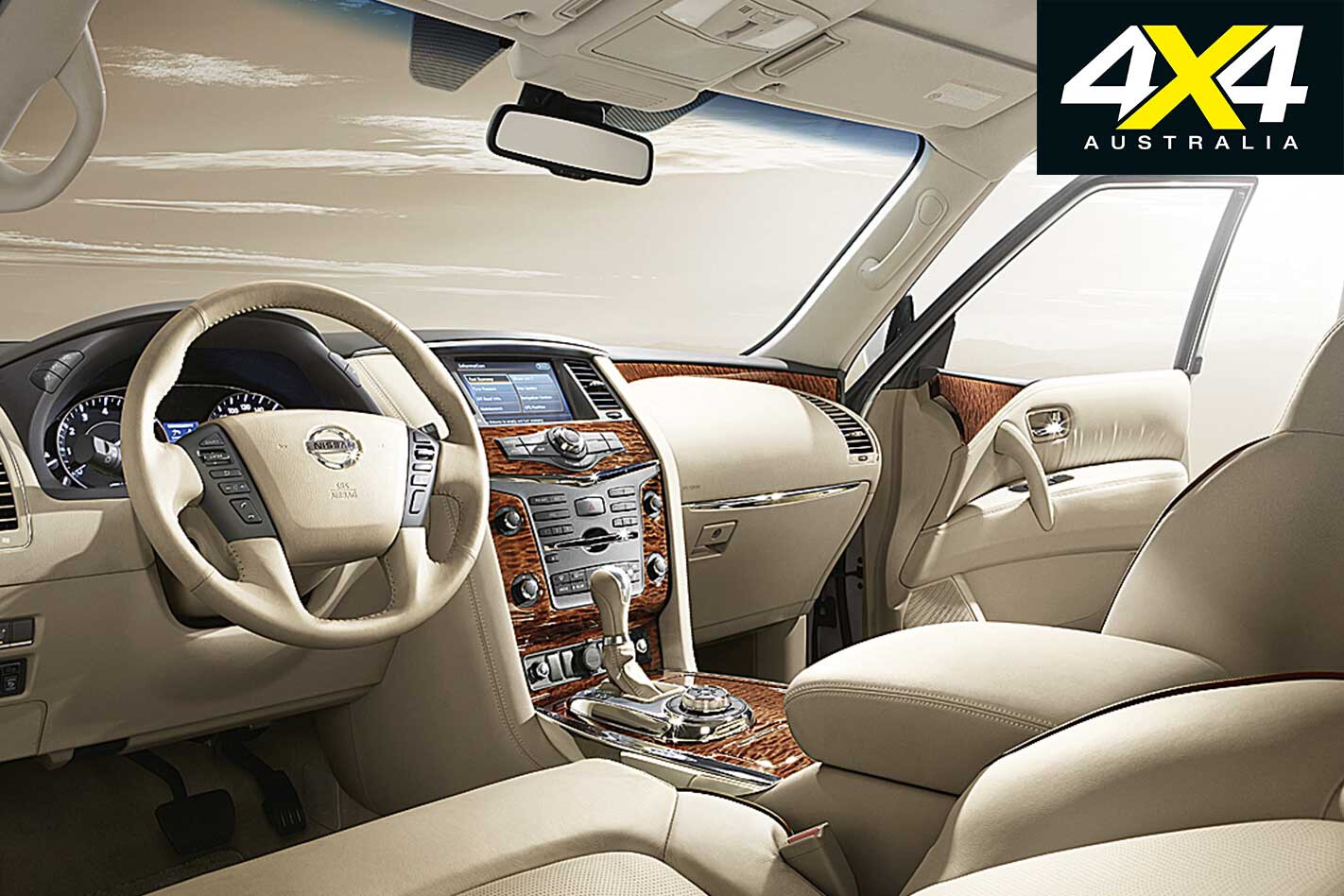
The product planners at Nissan Australia are beavering away to sort out the new Patrol model line-up. The public line is, no equipment has been ruled in or out. In reality, it’s mostly sorted, but you don’t reveal such things so far out from a launch. But here’s what we already know the Patrol offers, most of which we should see here…
Safety: A maximum six airbags will be available. Lane departure warning; intelligent cruise control; stability control; a forward collision warning system and a claimed world-first tyre inflation indicator for the tyre pressure monitoring system are also included. The Y62 also comes with bigger brakes including new callipers and boosters.
Comfort: There are a couple of claimed world firsts here; namely an individual multi-screen DVD system and new roof-mounted air vents that blow in a curtain of cool air that acts as a barrier against heat penetrating the cabin. Also on the equipment list is a cool box, 9.3GB hard drive, sat-nav, a 360-deg camera monitoring system and a power lift tailgate.

